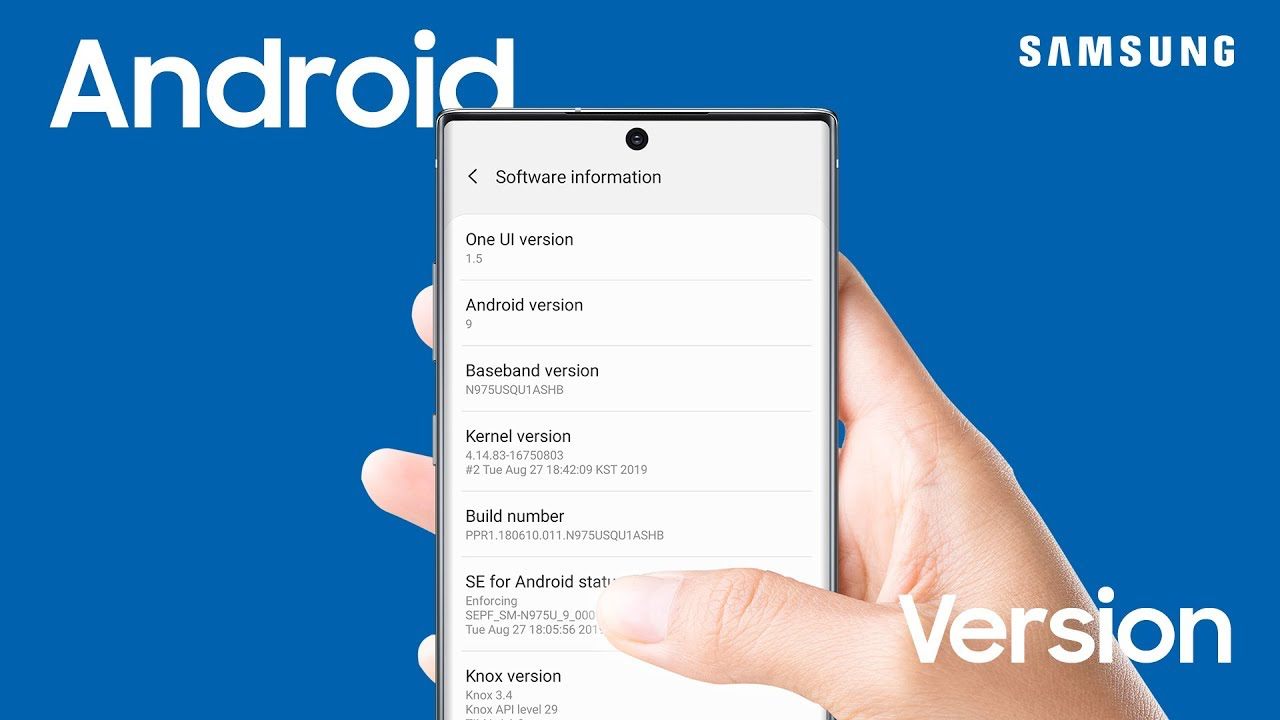Samsung Build Number Explanation: How to Decode

Samsung is the largest smartphone manufacturer in the world at present. It received this status via having a vast & varying range. Samsung issues regular updates to its devices in four parts, i.e., monthly, quarterly, bi-annually, and yearly. These updates depend upon the recently updated Samsung’s Fours Year Software Support Policy. But that’s a subject for another time; today, we are going to explain how you can read the build no. of the updates known as firmware identifier or build no.
Samsung Build Number:
If you are a Samsung device user, you must have noticed that the different update on your smartphone brings different serial no./build no. in the changelog, aka your updated notification. We are sure many of you will be curious to know how what & why of that update, meaning just what changes the update brings and how to read them. So that is what we are exactly doing. Fasten your belts because it’s going to be a little confusing at the beginning. Still, we are sure once you get hold of it, you will become an expert at reading the firmware numbers.
How To Decode Samsung Build Number:
So there are four sections of a build number, all but one divided into three parts. Starting with the first segment, we will take an example from the Galaxy S22 series of a Galaxy S22 Ultra Asian variant with build no. S908-EXX-U2A-VF9.
- First Segment Device Information Section (DIC); We will dub this section the Device Information Section (DIC), consisting of the first four letters.
First Letter; Let us start with the first Letter. The first Letter, e.g., S denotes the device’s series name; here, it will be an S series device. Below is a list of series represenattaionby letters;
Note: The ‘G previously denoted the S series,’ so don’t be confused if you come across an older device’s Letter.
- N – denotes the recently canceled Galaxy Note series.
- S – This is the flagship Galaxy S series.
- F – Clamshell foldable Galaxy Z series occupies this alphabet.
- E – Mid-range Galaxy F series.
- A – Starting-Mid range A series.
- M – Entry-Mid level M series, most popular in Asian and Indian countries.
Second Letter; 3 represents price range, e.g., S908- 9 here denotes the flagship devices, and then it further decreases to mid to entry-level range, following with 7, 5, and 3, etc. Here in S908, nine is to represent a high-end device in terms of price. For a Galaxy S21, its starting second will be 9 as in G99.
Third Letter; this Letter represents the generation of the device, i.e., how many series generations have been released till now, usually following a yearly pattern. Let’s take S908– then it’s the new hybrid of the Note and S series; thus, it has ‘0’ in the Letter. For an S21, it would be the 9th generation of the device.
Fourth Letter; This represents the display size of the device but there is a catch; ‘0’ and ‘5’ are for LTE/4G, and 1,6 and 8 are for 5G devices. For example, a Samsung Galaxy Z Fold3 5G would consist of 6 in the fourth Letter across all variants.
That concludes our first section. Let’s move on to the second;
- Second section or Region Details (RD) of the device; We take an example of a Galaxy S22 Ultra with the EXX in the second constituting 3 letters. Let’s start with the first.
Fourth Letter; It represents the region for the different regions; there are different alphabets. They are;
- F & B; Global versions with F being LTE & B being the 5G.
- N; Reserved for S.Korea.
- E; Asian markets.
- U; the USA, U1 for unlocked, and U for the carrier’s locked networks such as T-Mobile, Verizon, etc.
- FN & FG; these are region-specific codes which represent.
Last Two Letter Of Second Section: The two last two letters denoted by XX contains even further information about the device region, i.e. XX would be European or Global variant. Usually, it’s the European model we see associated with XX.
However, if the device belongs to the USA, these two Alphabets would be changed to SQ for locked models and UE for unlocked variants. Let us understand by an example, take Galaxy Z Fold 3 with firmware no. F926USQ here for locked the alphabets would be replaced by UE for an unlocked model.
Section Three or Device Software Information:
This is the device software information center, you can know about what the update brings in these three letters.
The first letter; will always be either a U or an S, with S representing only security patch and U representing Patch + updates with additional features like apps, system tweaking, visual improvements, etc.
Second Letter; This letter can change, which represents the Bootloader version i.e. the basic input and output system responsible for the startup or system initiation. If we take an example of U2A here 2 will represent the Bootloader version, that would be the second build and this cant revert back it will always be in numerical progression or remains unchanged.
Third Letter; This is an alphabet that changes and is related to the OneUI upgrade and how many versions of the OneUI the device has received. The alphabet will change in progression wrt the OneUI version.
Fourth Section or Device Software Time Information:
This section deals with informing the Time related to firmware development, yearly and monthly.
First Letter; Let us take an example of VF9 as the last three letters. The V here is the year of firmware development, with U being 2021 so if it progresses here V will be 2022 and continue further.
Note; However, this could also show the OS version for newer smartphones.
Second Letter; It represents the firmware completion month, A is considered as Jan so F here would be June, however, this does not always coincide with the time meaning the version could be older but with the release next month.
Third Letter; This deals with build identifier and is a Letter or a digit, meaning it always starts with an A or 1, e.g. 9 with the 9th build. However, it also doesn’t coincide always.
We tried to simplify this information, but that’s it for now, we will keep you updated for more of this information.
“We are a team of passionate individuals dedicated to providing quality content that keeps you updated and gives you the edge in the latest smartphone development. Your feedback and response are valuable to us, So please share your feedback and suggestions in the comments. Until then, we will see you all next time.”



